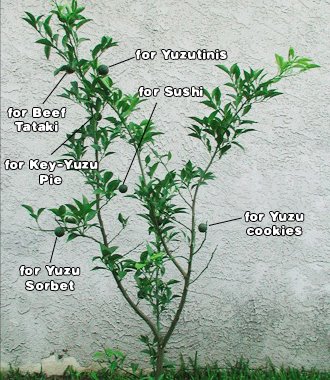 Remember during elementary school when the teachers would pass out the monthly book club catalogs, full of adventure books, mystery novels and sticker books. The kids, including myself, used to go nuts over these. But I was an underprivileged kid – I never got to order any of these thanks to my Chinese parents, who also never bought me the ‘good lunches’ consisting of Lunchables, Capri-Sun and Sunkist Fruit Snacks. My only children’s books happened to be written in a language completely foreign to me. And it wasn’t even in Chinese either. Sometimes my children’s books would be found under my dad’s mattress, but that’s another story. So after begging my mom to let me finally order a book, I gladly showed her my pick from the catalog. I had circled nearly 20 different books with my No. 2 Ticonderoga pencil. My mom looked at me and said, “only one.” After careful consideration, I went for the most expensive one – Shel Silverstein’s “The Giving Tree”. Valued at $15.95 (which was a lot back in the late 80s), this book had cool illustrations and a wonderful story that I had read over and over again. For those that haven’t read this, the title of the book says it all. It’s the story of a boy and his leafy & barked friend. As the boy grows older, he asks the tree for its vital organs so that he may progress in life. Eventually the man dies by the tree that had provided sustenance since he was a little boy. *Sniff.
Remember during elementary school when the teachers would pass out the monthly book club catalogs, full of adventure books, mystery novels and sticker books. The kids, including myself, used to go nuts over these. But I was an underprivileged kid – I never got to order any of these thanks to my Chinese parents, who also never bought me the ‘good lunches’ consisting of Lunchables, Capri-Sun and Sunkist Fruit Snacks. My only children’s books happened to be written in a language completely foreign to me. And it wasn’t even in Chinese either. Sometimes my children’s books would be found under my dad’s mattress, but that’s another story. So after begging my mom to let me finally order a book, I gladly showed her my pick from the catalog. I had circled nearly 20 different books with my No. 2 Ticonderoga pencil. My mom looked at me and said, “only one.” After careful consideration, I went for the most expensive one – Shel Silverstein’s “The Giving Tree”. Valued at $15.95 (which was a lot back in the late 80s), this book had cool illustrations and a wonderful story that I had read over and over again. For those that haven’t read this, the title of the book says it all. It’s the story of a boy and his leafy & barked friend. As the boy grows older, he asks the tree for its vital organs so that he may progress in life. Eventually the man dies by the tree that had provided sustenance since he was a little boy. *Sniff.My reason for digging up old bones? I found my Giving Tree - a Japanese citrus-fruit tree called a yuzu tree. If Shel Silverstein had been born Japanese, he would probably be writing about a yuzu tree, and not an apple tree. The fruit originates from China and ranges between 5.5 and 7.5 cm in diameter, but can be as large as a grapefruit. Its taste is similar to a grapefruit/mandarin orange. The Yuzu is not eaten as an orange is, but is used for garnishing, marinating and producing citrus-based sauces like Ponzu. The peel and rinds have a oily, robust-lemon and lime flavor. The Japanese sometimes dunk whole yuzu fruits in spas and bath tubs for an aromatic time. I have yet to see Bath & Body Works start a line – not that I would care.
I’ve eaten beef and tuna tataki many times with ponzu sauce but have never experienced the taste of yuzu as an isolated ingredient. Chef Toshi at Sushi Karen makes a great amberjack kanpachi sushi using puréed garlic, jalapeno, soy sauce and fresh yuzu. After I had this, J and I attempted to make this using a ponzu sauce. It was good, but just not the same.
Since I couldn’t find this fruit anywhere in LA Japanese markets, I thought it would be easier to just grow it on my own. Kirk, Elmomonster and Pirikara all helped me out in seeking this delectable fruit. Thanks for the help guys! Yesterday, my mom and I took a peek at the San Gabriel Nursery and found 4 yuzu plants ranging from $39.99 to $79.99. The one I picked was the cheapest yet also bore the most fruit – 8 to be exact, yet unripened. I kept 1 yuzu fruit in my pocket to taste it later on. Yuzu is typically expensive because it supposedly only grows fruit once a year. If this plant does well, I'm going back to San Gabriel Nursery for a Meyer Lemon and Blood Orange tree. As soon as I got home, my mom and I removed the dying plant in the spot we had decided on. I then cut off every single evil thorn on the plant - nearly 65 thorns, some as long as 3". The yuzu bears beautiful, fragrant fruit, but it's also obvious that it is cheap and thrifty. I wonder how many hummingbirds have been impaled on the yuzu tree.

To my Yuzu tree, I only ask that you give me your fruit to make bombass sushi – that’s all I want. Well, maybe some key-yuzu pie. Or how about some yuzu-flavored cookies. Wait! And the sound of Yuzu sorbet sounds great too. I'lll hopefully have a list of different yuzu-infused recipes once this tree decides to 'give'.
Thanks again to Kirk, Elmonster and Pirikara. I’m one happy man.
Thanks for reading.
No comments:
Post a Comment